#Vol 208
Explore tagged Tumblr posts
Text
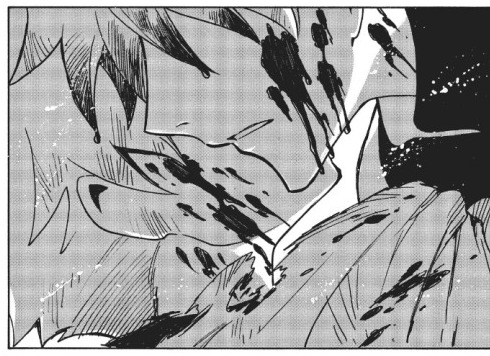
WHAT DID HE SAY?
WRONG ANSWERS ONLY.
My wild hopes are that he said "Play dead", but also like... if this really is an act? HE REALLY DIDN'T HAVE TO GO THAT HARD.
HE WENT REALLY REALLY HARD.
THERE WERE STABBINGS AND EVERYTHING.
Is it plausible that he just almost killed his whole family to convince Evil Wolverine that he still didn't have a soul, or am I just desperately hoping?
I have no idea!
But until then, thank you everyone for all the wild March 15 energy we've brought to a day that is definitely actually March 16 and/or March 17.
It's close enough.
And thank you extra to all my wonderful Patrons! <3
First Tier of Patrons
Coconi
Rien [Ri]
Sapphireswimming
Luke Wilson
Stupid Kitsune
Jordan Fredriksz
Shynerdycactus
CloudMenaceBird
Corinne Burr
Qatari Pekarsky
Fer E
MokoCharm
limitless_paper
Higher Tier of Patrons:

Until next time uh... let's all be wary of Tumblr memes.
You just never know.
#Spiders georg could be anywhere we just dont know#liveblogging the reservoir chronicle#Liveblog: END#Vol 208#Liveblogging the patreon chronicle#Liveblogging the reservoir patreon#put down that scalene triangle!!#(god how long have I been on this website)
65 notes
·
View notes
Text

19 notes
·
View notes
Text
fools will try and tell you that kara is a science nerd, but true supergirl understanders know that she's a jock (participated in the kryptonian equivalents of chariot racing, hockey, and track-and-field back on krypton when she was younger) with a passion for the humanities (former actress, nearly joined the artist guild on new krypton, and preferred history to science).
#kara zor el#she's a sensitive jock !!#sorry but scientist kara is kind of boring to me unfortunately#mostly bc they've never done anything super interesting with the concept imo#i do love the idea of her having a lot of scientific understanding on earth just bc of how advanced krypton was#but it's not even impressive or interesting to her#anyway. sources for my claims:#sg vol 7 issue 1 for chariot racing#sg vol 7 annual 2 for hockey#supergirl special 2024 for track-and-field#sg vol 1 and the superman family 208-222 for acting#sg vol 5 issue 43 for artists guild#and finally sg vol 7 annual 2 again for her preferring history over science
51 notes
·
View notes
Text

I'm still a good hand-ta-hand fighter, but back in the 80s I'd just beat down baddies with my bare fisticuffs!
Learn how that helped my hero rep in my latest video, "The History of Kilowog Part 2: Lanterns on Earth," debutin' next week here on Facebook!
But why wait? Hero an' Superhero subscribers at my Buy Me A Coffee site can watch it today! Right now! Head ta' https://buymeacoffee.com/theevilwriter/the-history-kilowog-part-2-early-access! What 'r ya' waitin' fer?
#kilowog#greenlantern#haljordan#dccomics#comics#historyofkilowog#comiclore#80scomics#this video will roughly cover green lantern corps vol 1 issue 201 to the very beginning of 208.
0 notes
Note
are hamsas a jewish thing? i see them all over jewish sites and in synagogues but i also see gentiles using/wearing them???
Short answer: Yes, hamsas are a Jewish thing, but they're not exclusively Jewish.
An open palm as a symbol is seen throughout the Middle East, and it is given many names and meanings. There is no consensus as to the origin of the symbol, but considering hand prints are seen even in paleolithic art all across the world, it wouldn't be that hard to see how a hand could become such an important symbol.
In Judaism, hands are often featured in artwork as the two hands of the Kohanim during the Priestly Blessing and as references to God's mighty hand when freeing the Jews from Egypt. Hamsas have been used as Jewish amulets since at least the Middle Ages, and there's evidence of hand symbology being used even earlier. The belief in Ayin Hara (The Evil Eye), which is often tied to Hamsas, is also a very old Jewish belief. It, too, is not an exclusively Jewish belief, but rather a belief common among Middle Eastern and Meditteranean cultures.
Not all Jews use the Hamsa as a symbol, and indeed many frown on it, seeing it as a superstition that is best not touched. However, it has been used for a long time by Sephardi and Mizrachi Jews, as well as more Kabbalistic Ashkenazi Jews.
Because of its appearence in both Jewish and Muslim cultures, the hamsa has become a symbol of Judeo-Islamic unity by some people. In 2009, the Hamsa Flag was envisioned as the flag of a united Israeli-Palestinian state.
In conclusion,
RATING: JEWISH (BUT NOT EXCLUSIVELY)
Further reading about Hamsas, Amulets, and the Evil Eye:
Sagiv, Gadi. “Dazzling Blue: Color Symbolism, Kabbalistic Myth, and the Evil Eye in Judaism.” Numen, vol. 64, no. 2/3, 2017, pp. 183–208. JSTOR, http://www.jstor.org/stable/44505334.
SABAR, SHALOM. “From Sacred Symbol to Key Ring: The Ḥamsa in Jewish and Israeli Societies.” Jews at Home: The Domestication of Identity, edited by SIMON J. BRONNER, Liverpool University Press, 2010, pp. 140–62. JSTOR, https://doi.org/10.2307/j.ctv1rmjz2.8.
Hamsa (Aish.com)
Amulets and Talismans (YIVO encyclopedia)
The Hamsa In Jewish Thought and Practice (Times of Israel)
Hamsa Flag (Ayin Press)
418 notes
·
View notes
Text
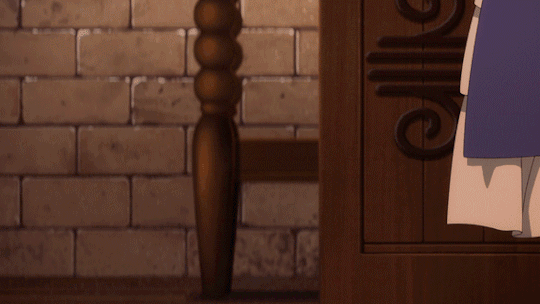
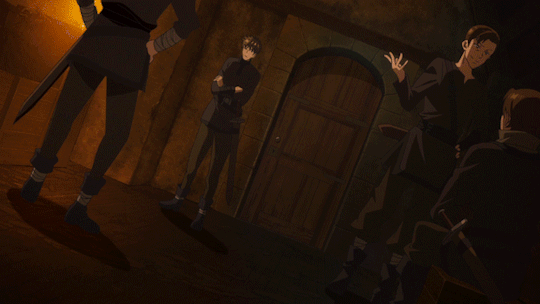
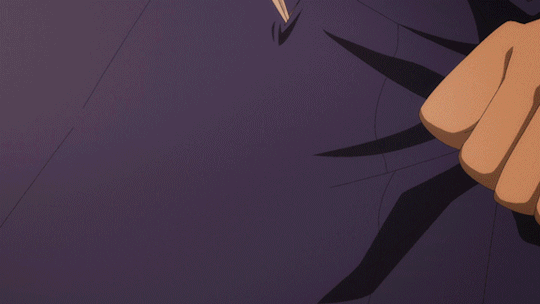


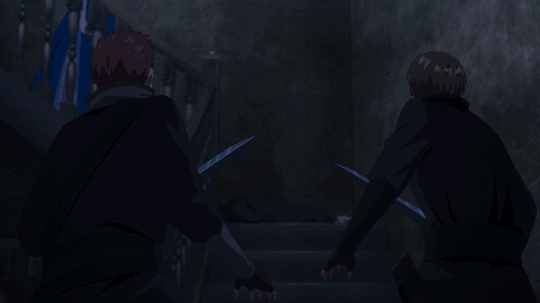


“Your Highness. With all due respect, I’d love to offer you a few words of advice.” “First of all. Don’t let a prisoner of war out of your sight. You mustn’t leave them alone, even in a locked room. If you can’t be there yourself, post guards inside the room with them. At least two.” “Second. Always search your captive for weapons more than once. If you have an underling frisk a prisoner, you should do the final check yourself. Honestly, you shouldn’t leave them clothed—strip them completely. That way they won’t be able to hide any weapons or tools to aid their escape. This is especially important if the prisoner is a woman. If she’s indecent, she’ll feel she can’t run away, and she’ll be afraid to try.” “Third. You neglected to bind my hands and feet. When you do bind a prisoner, make sure they’re in handcuffs and that the base of their thumbs is tied off with a durable rope. As for their ankles—I imagine this goes without saying, but it’s best to fasten them to a pillar or a bed, something solid.” “But even with all of that, it’s still half-hearted. Do you know how best to ensure someone can’t run away?” “You break their arms and legs.”
Amekawa, Touko. 7th Time Loop: The Villainess Enjoys a Carefree Life Married to Her Worst Enemy! (Light Novel) Vol. 1 (pp. 208-209)
#Rishe's fifth life is showing#I like how the anime did the escape as a flashback#but her lecture from the novel is so much better#Rishe is NOT fucking around#and that's why Arnold loves her#rishe irmgard weitzner#7th time loop#7th time loop the villainess enjoys a carefree life married to her worst enemy#loop 7 kaime no akuyaku reijou wa#sailor arashi gifs#gif warning
440 notes
·
View notes
Text

Cover for Vol 2 of Cyborg 009.
Set to be released on April 16.
19 notes
·
View notes
Text


Spoilers for comics in April!
These are from the official solicits for that month, which you can see in full at Adventures In Poor Taste.
SUICIDE SQUAD: KILL ARKHAM ASYLUM #4 Written by JOHN LAYMAN Art by JESÚS HERVÁS Cover by DAN PANOSIAN Variant cover by ARIEL OLIVETTI Variant cover by DAVID NAKAYAMA $4.99 US | 32 pages | 4 of 5 | Variant $5.99 US (card stock) ON SALE 5/7/24 It takes more than a boomerang to survive a riot at Arkham Asylum, and all its super-powered rioters. This in particular sucks if a boomerang is your weapon of choice, and your name is Captain Boomerang. So, to survive you join up with some allies. But be careful who you join with, because nobody is to be trusted, and your allies just might be worse than your enemies. Presenting the most brain-bending, backstabbing, boomeranging-est episode yet of Rocksteady’s Suicide Squad: Kill The Justice League! Each print issue includes a redeemable code for a bonus weapon doll digital token in Suicide Squad: Kill the Justice League inspired by the comics. Get the new Mad Hatter weapon doll digital token with issue #4. Paying subscribers with a DC Universe Infinite Annual or Ultra subscription (U.S. only) who read the digital issues of Suicide Squad: Kill Arkham Asylum will also receive these bonus digital codes.* *Terms Apply. See dc.com/suicide-squad-faq for details. DC UNIVERSE INFINITE is not intended for children.
Ah Digger, never change.
This next book reprints some Webtoons strips, which has a new Mirror Master.
RED HOOD: OUTLAWS VOLUME TWO Written by PATRICK R. YOUNG Art by NICO BASCUÑÁN, JAVIER RODRÍGUEZ VÉJARES, and SEBASTIÁN FRANCHINI Cover by VASCO GEORGIEV $14.99 US | 208 pages | Softcover | 6″ x 9″ | ISBN: 978-1-77952-689-2 ON SALE 7/2/24 Jason Todd, Bizarro, and Artemis know what it means to play second fiddle to the Justice League…but now, that is even more the case as they’ve been contracted into work-for-hire duty by none other than Batman, Superman, and Wonder Woman. All aboard the Watchtower as the new Outlaws tackle a meddling Medusa and take a trip to the Mirror Dimension to face Mirror Master himself (along with some other Bizarro versions of our great trio). Can the Outlaws handle the twisted reflections of themselves? Or will they succumb to pressure from all (literal) angles?! Collecting episodes 12-22 of WEBTOON’s smash-hit series, optimized for a brand-new reading experience in print. Your new favorite series continues!
And we're finally getting a William Messner-Loebs Omnibus! For those not familiar with it, this (partially) covers the run which introduced Hartley's reform and coming out. However, this particular volume won't contain the coming out issue; that'll probably be in the next one.
THE FLASH BY WILLIAM MESSNER-LOEBS AND GREG LaROCQUE OMNIBUS VOL. 1 Written by WILLIAM MESSNER-LOEBS and MIKE BARON Art by GREG LaROCQUE, BUTCH GUICE, and others Cover by GREG LaROCQUE $125.00 US | 986 pages | 7 1/16″ x 10 7/8″ | Hardcover | ISBN: 978-1-77952-581-9 ON SALE 6/18/24 Following the death of Barry Allen, Wally West will don the red suit and become the new Fastest Man Alive. Kid Flash no more, Wally must pave his own path forward and live up to the legacy of the man who saved the universe. Collects The Flash #1-28, The Flash Annual #1-3, Manhunter #8-9, Secret Origins Annual #2, and pages from Invasion! #2-3, featuring over a dozen never-before-collected issues.
#Captain Boomerang#Pied Piper#Mirror Master#Harley Quinn#Deadshot#spoilers: comics#solicits#King Shark#the Flash#Suicide Squad Kill the Justice League
52 notes
·
View notes
Text
Wait
I've changed my mind
I'm going back in

We're coming back down the hill with another liveblog!
#Bick's desperation for Tsubasa answers EXPOSED#liveblog announcement tag#Liveblogging the reservoir chronicle#Vol 208#You can't just dramatically- *#*And then followed a series of edits where Bick made a badly worded joke about stabbing#Because of Ides of March#But then it was overly confusing#So he edited it out#But then he read the chapter a little bit further#and then came back to edit the tags again#Because guess what happened#What a train wreck#What a complete collapse of a joke
40 notes
·
View notes
Photo

💕 Sparklecare Update 💕
VOL 3: Pages 206-208 🌈 Click here to read!
✨ Support us on Patreon!
✨ Updates Mondays & Thursdays
106 notes
·
View notes
Text
random bits of trivia about pre-crisis kara bc shes my babygirl:
she was a bridesmaid at ray palmer and jean loring’s wedding (justice league of america #157)
her favorite genres of music are jazz and rock (supergirl vol 2 #8)
she called acting her real ambition, and it was her life-long goal to become an actress (supergirl vol 1 #1)
she’s been in two movies and a soap opera (action comics #372, adventure comics #391, the superman family #208-222)
her favorite meal is veal marsala (all-new collectors' edition #c-58)
she was a psychology major at lake shore university (supergirl vol 2 #1)
her birthday is september 22, making her a virgo (super dc calendar 1976)
she was named after the kryptonian goddess of beauty (action comics #314)
she has 5 living parents (zor el and alura [who survived argo city’s destruction by escaping to the survival zone in action comics #309-310], fred and edna danvers [who adopted her in action comics #279], and hippolyta [who adopted her in supergirl vol 1 #9])
she has owned two cats named streaky and only the first one had powers (she adopted streaky i in action comics #261 and streaky ii in supergirl vol 2 #6)
she never actually lived on krypton (being born years later on the surviving chunk of argo city) and only learned about it from stories her mother would tell her (action comics #252/314)
after landing on earth she was raised and primarily lived in california before later moving to florida, new york, and illinois (midvale, san francisco (obv), and vandyre university are all located within CA [adventure comics #406, supergirl vol 1 #1/4], and stanhope is driving distance from midvale and “state tech” so i’m assuming its also in california [action comics #318])
in total she's had three jobs (camera operator/reporter, student advisor, and actress) and attended three colleges (stanhope college, vandyre university, and lake shore university). she was also a part of a sorority while attending stanhope college (action comics #318).
#read my precrisis kara trivia boy#kara zor el#will possibly add more to this but !!#also i know that midvale is supposed to be midway between smallville and metropolis (? could have made that up)#but it's described as being near vandyre uni which is in CA so i'm rolling with it#subjecting everyone to my drafts
107 notes
·
View notes
Text

DIdja think I weren't nothin' but a drill sergeant on Oa? In the 80s I lived just outside 'a Los Angeles, an' was a minor celebrity who got interviewed by Tom Brokaw!
Ya' can learn all the details in my new video "The History of Kilowog Part 2: Lanterns On Earth!" It'll be goin' up on Facebook next week, but why wait?
Hero an' Superhero subscribers can watch it now, right here: https://buymeacoffee.com/theevilwriter/the-history-kilowog-part-2-early-access
#greenlantern#kilowog#tombrokaw#80scomics#dccomics#comics#videodebut#superhero#comiclore#this video will roughly cover green lantern corps vol 1 from 201 to the very beginning of 208
0 notes
Text
Pressure Original Character - The Dracea (folklore-inspired)

Looks like a smiling face with some long lashes and has a dark purple hair-like trail around itself. Appears throughout the run in areas with water spouting from damaged pipes. This is in order to make it somewhat easier to sea that there is something off. Only visible in runs with at least two players. She disguises as items in drawers and when an user takes it, she takes the user as a host to appear like the user, yet the user is gone. Unless the user is revived, dracea roams around behind the other team mate(s) disguised as the initial user only moving a bit slower and tries to take the other user(s) alongside.

Sebastian would sell an eel ointment or eel fat that one could use in order to see dracea disguised as an item, appearing in the form of a golden ring, jewelry, or something like that.

A not-so-good thing would be when dracea would disguise as an item in a shop, for example upon arriving at Sebastian when one would try to buy something. Shell no!
Thought about this when re-reading the folktales about the dracæ. Loosely retold, they are an Scottish freshwater-person who can transform into desired objects like jewelry, golden rings or cups, yet also wooden dishware. Usually, the dracæ would float above the water surface as an object. When a mortal would get hold of a dracæ-turned item, one would be taken underwater to serve them in their abodes either in a lake or river. Upon touching one's eye with the ointment made of a serpent's grease, one would be able to see how the dracæ seemingly exist among society in the forms of mortal human beings.
Initially in France, the drac is quite the same freshwater-person, capable of shapeshifting into objects like wooden dishware and golden cups or rings to lure victims. It is capable of assuming a mortal human form, lurking and shopping in markets ashore. One of drac's true forms supposedly looked like large purple blobs floating above a water surface. Other versions tell of the drac's forms comprising of animals like a horse or dragon. One was able to see the dracs by touching one's eye with eel pasty aka. eel fat.
There is more information regarding this, therefore, here are some resources:
"Folk-Lore and Legends: Scotland" pages 173-174,
"Encyclopedia of Celtic Mythology and Folklore" by Patricia Monaghan on page 136: https://books.google.de/books?id=nd9R6GQBB_0C&pg=PA136&dq=dracae+folklore&hl=de&newbks=1&newbks_redir=0&sa=X&ved=2ahUKEwir2t2RyK6JAxVJ_rsIHWOeLGkQ6AF6BAgJEAI#v=onepage&q=dracae%20folklore&f=false"
"Encyclopedia of Fairies in World Folklore and Mythology" by Theresa Bane on page 111: https://books.google.de/books?id=rUqpAAAAQBAJ&pg=PA111&dq=dracae+folklore&hl=de&newbks=1&newbks_redir=0&sa=X&ved=2ahUKEwir2t2RyK6JAxVJ_rsIHWOeLGkQ6AF6BAgFEAI#v=onepage&q=dracae%20folklore&f=false
Folklore Snippets: The Drac - Seven Miles of Steel Thistles Blogspot https://steelthistles.blogspot.com/2021/09/folklore-snippets-drac.html
"Folklore: a fully peer-reviewed international journal of folklore and folkloristics published four times a year" Vol. 1 pages 208-209: https://books.google.de/books?id=z0mi7Nc7e3cC&pg=PA209&dq=drac+folklore+eel&hl=de&newbks=1&newbks_redir=0&sa=X&ved=2ahUKEwiB38S81a6JAxUrh_0HHWe6E6YQ6AF6BAgGEAI#v=onepage&q=drac%20folklore%20eel&f=false
Mermaid Monday: The Very Strange Tale of French Dracs - Crypto Ville https://visitcryptoville.com/2014/07/28/mermaid-monday-the-very-strange-tale-of-french-dracs/
The Drac [French folktales] - Bestiarium Tumblr https://www.tumblr.com/bestiarium/724903391029035009/the-drac-french-folktales-the-municipality
(If any sources are not able to be viewed, please consult an archival site!)
Hoho, I did not make this in order to introduce others to the folklore of the dracae and drac :>
#my artwork#fan art#roblox pressure#pressure oc#roblox pressure oc#pressure game#pressure original character#pressure art#pressure fanart#pressure roblox
6 notes
·
View notes
Text
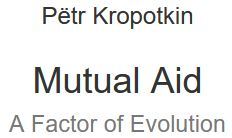
Footnotes, 201 - 250
[201] W. Gramich, Verfassungs- und Verwaltungsgeschichte der Stadt Würzburg im 13. bis zum 15. Jahrhundert, Würzburg, 1882, p. 34.
[202] When a boat brought a cargo of coal to Würzburg, coal could only be sold in retail during the first eight days, each family being entitled to no more than fifty basketfuls. The remaining cargo could be sold wholesale, but the retailer was allowed to raise a zittlicher profit only, the unzittlicher, or dishonest profit, being strictly forbidden (Gramich, l.c.). Same in London (Liber albus, quoted by Ochenkowski, p. 161), and, in fact, everywhere.
[203] See Fagniez, Études sur l’industrie et la classe industrielle à Paris au XIIIme et XIVme siècle, Paris, 1877, pp. 155 seq. It hardly need be added that the tax on bread, and on beer as well, was settled after careful experiments as to the quantity of bread and beer which could be obtained from a given amount of corn. The Amiens archives contain the minutes of such experiences (A. de Calonne, l.c. pp. 77, 93). Also those of London (Ochenkowski, England’s wirthschaftliche Entwickelung, etc., Jena, 1879, p. 165).
[204] Ch. Gross, The Guild Merchant, Oxford, 1890, i. 135. His documents prove that this practice existed in Liverpool (ii. 148–150), Waterford in Ireland, Neath in Wales, and Linlithgow and Thurso in Scotland. Mr. Gross’s texts also show that the purchases were made for distribution, not only among the merchant burgesses, but “upon all citsains and commynalte” (p. 136, note), or, as the Thurso ordinance of the seventeenth century runs, to “make offer to the merchants, craftsmen, and inhabitants of the said burgh, that they may have their proportion of the same, according to their necessitys and ability.”
[205] The Early History of the Guild of Merchant Taylors, by Charles M. Clode, London, 1888, i. 361, appendix 10; also the following appendix which shows that the same purchases were made in 1546.
[206] Cibrario, Les conditions économiques de l’Italie au temps de Dante, Paris, 1865, p. 44.
[207] A. de Calonne, La vie municipale au XVme siècle dans le Nord de la France, Paris, 1880, pp. 12–16. In 1485 the city permitted the export to Antwerp of a certain quantity of corn, “the inhabitants of Antwerp being always ready to be agreeable to the merchants and burgesses of Amiens” (ibid., pp. 75–77 and texts).
[208] A. Babeau, La ville sous l’ancien régime, Paris, 1880.
[209] Ennen, Geschichte der Stadt Köln, i. 491, 492, also texts.
[210] The literature of the subject is immense; but there is no work yet which treats of the mediæval city as of a whole. For the French Communes, Augustin Thierry’s Lettres and Considérations sur l’histoire de France still remain classical, and Luchaire’s Communes françaises is an excellent addition on the same lines. For the cities of Italy, the great work of Sismondi (Histoire des républiques italiennes du moyen âge, Paris, 1826, 16 vols.), Leo and Botta’s History of Italy, Ferrari’s Révolutions d’Italie, and Hegel’s Geschichte der Städteverfassung in Italien, are the chief sources of general information. For Germany we have Maurer’s Städteverfassung, Barthold’s Geschichte der deutschen Städte, and, of recent works, Hegel’s Städte und Gilden der germanischen Völker (2 vols. Leipzig, 1891), and Dr. Otto Kallsen’s Die deutschen Städte im Mittelalter (2 vols. Halle, 1891), as also Janssen’s Geschichte des deutschen Volkes (5 vols. 1886), which, let us hope, will soon be translated into English (French translation in 1892). For Belgium, A. Wauters, Les Libertés communales (Bruxelles, 1869–78, 3 vols.). For Russia, Byelaeff’s, Kostomaroff’s and Sergievich’s works. And finally, for England, we posses one of the best works on cities of a wider region in Mrs. J.R. Green’s Town Life in the Fifteenth Century (2 vols. London, 1894). We have, moreover, a wealth of well-known local histories, and several excellent works of general or economical history which I have so often mentioned in this and the preceding chapter. The richness of literature consists, however, chiefly in separate, sometimes admirable, researches into the history of separate cities, especially Italian and German; the guilds; the land question; the economical principles of the time; the economical importance of guilds and crafts; the leagues between, cities (the Hansa); and communal art. An incredible wealth of information is contained in works of this second category, of which only some of the more important are named in these pages.
[211] Kulischer, in an excellent essay on primitive trade (Zeitschrift für Völkerpsychologie, Bd. x. 380), also points out that, according to Herodotus, the Argippaeans were considered inviolable, because the trade between the Scythians and the northern tribes took place on their territory. A fugitive was sacred on their territory, and they were often asked to act as arbiters for their neighbors. See Appendix XI.
[212] Some discussion has lately taken place upon the Weichbild and the Weichbild-law, which still remain obscure (see Zöpfl, Alterthümer des deutschen Reichs und Rechts, iii. 29; Kallsen, i. 316). The above explanation seems to be the more probable, but, of course, it must be tested by further research. It is also evident that, to use a Scotch expression, the “mercet cross” could be considered as an emblem of Church jurisdiction, but we find it both in bishop cities and in those in which the folkmote was sovereign.
[213] For all concerning the merchant guild see Mr. Gross’s exhaustive work, The Guild Merchant (Oxford, 1890, 2 vols.); also Mrs. Green’s remarks in Town Life in the Fifteenth Century, vol. ii. chaps. v. viii. x; and A. Doren’s review of the subject in Schmoller’s Forschungen, vol. xii. If the considerations indicated in the previous chapter (according to which trade was communal at its beginnings) prove to be correct, it will be permissible to suggest as a probable hypothesis that the guild merchant was a body entrusted with commerce in the interest of the whole city, and only gradually became a guild of merchants trading for themselves; while the merchant adventurers of this country, the Novgorod povolniki (free colonizers and merchants) and the mercati personati, would be those to whom it was left to open new markets and new branches of commerce for themselves. Altogether, it must be remarked that the origin of the medieval city can be ascribed to no separate agency. It was a result of many agencies in different degrees.
[214] Janssen’s Geschichte des deutschen Volkes, i. 315; Gramich’s Würzburg; and, in fact, any collection of ordinances.
[215] Falke, Geschichtliche Statistik, i. 373–393, and ii. 66; quoted in Janssen’s Geschichte, i. 339; J.D. Blavignac, in Comptes et dépenses de la construction du clocher de Saint-Nicolas à Friborg en Suisse, comes to a similar conclusion. For Amiens, De Calonne’s Vie Municipale, p. 99 and Appendix. For a thorough appreciation and graphical representation of the mediæval wages in England and their value in bread and meat, see G. Steffen’s excellent article and curves in The Nineteenth Century for 1891, and Studier öfver lönsystemets historia i England, Stockholm, 1895.
[216] To quote but one example out of many which may be found in Schönberg’s and Falke’s works, the sixteen shoemaker workers (Schusterknechte) of the town Xanten, on the Rhine, gave, for erecting a screen and an altar in the church, 75 guldens of subscriptions, and 12 guldens out of their box, which money was worth, according to the best valuations, ten times its present value.
[217] Quoted by Janssen, l.c. i. 343.
[218] The Economical Interpretation of History, London, 1891, p. 303.
[219] Janssen, l.c. See also Dr. Alwin Schultz, Deutsches Leben im XIV und XV Jahrhundert, grosse Ausgabe, Wien, 1892, pp. 67 seq. At Paris, the day of labor varied from seven to eight hours in the winter to fourteen hours in summer in certain trades, while in others it was from eight to nine hours in winter, to from ten to twelve in Summer. All work was stopped on Saturdays and on about twenty-five other days (jors de commun de vile foire) at four o’clock, while on Sundays and thirty other holidays there was no work at all. The general conclusion is, that the mediæval worker worked less hours, all taken, than the present-day worker (Dr. E. Martin Saint-Léon, Histoire des corporations, p. 121).
[220] W. Stieda, “Hansische Vereinbarungen über städtisches Gewerbe im XIV und XV Jahrhundert,” in Hansische Geschichtsblätter, Jahrgang 1886, p. 121. Schönberg’s Wirthschaftliche Bedeutung der Zünfte; also, partly, Roscher.
[221] See Toulmin Smith’s deeply-felt remarks about the royal spoliation of the guilds, in Miss Smith’s Introduction to English Guilds. In France the same royal spoliation and abolition of the guilds’ jurisdiction was begun from 1306, and the final blow was struck in 1382 (Fagniez, l.c. pp. 52–54).
[222] Adam Smith and his contemporaries knew well what they were condemning when they wrote against the State interference in trade and the trade monopolies of State creation. Unhappily, their followers, with their hopeless superficiality, flung mediæval guilds and State interference into the same sack, making no distinction between a Versailles edict and a guild ordinance. It hardly need be said that the economists who have seriously studied the subject, like Schönberg (the editor of the well-known course of Political Economy), never fell into such an error. But, till lately, diffuse discussions of the above type went on for economical “science.”
[223] In Florence the seven minor arts made their revolution in 1270–82, and its results are fully described by Perrens (Histoire de Florence, Paris, 1877, 3 vols.), and especially by Gino Capponi (Storia della repubblica di Firenze, 2da edizione, 1876, i. 58–80; translated into German). In Lyons, on the contrary, where the movement of the minor crafts took place in 1402, the latter were defeated and lost the right of themselves nominating their own judges. The two parties came apparently to a compromise. In Rostock the same movement took place in 1313; in Zürich in 1336; in Bern in 1363; in Braunschweig in 1374, and next year in Hamburg; in Lübeck in 1376–84; and so on. See Schmoller’s Strassburg zur Zeit der Zunftkämpfe and Strassburg’s Blüthe; Brentano’s Arbeitergilden der Gegenwart, 2 vols., Leipzig, 1871–72; Eb. Bain’s Merchant and Craft Guilds, Aberdeen, 1887, pp. 26–47, 75, etc. As to Mr. Gross’s opinion relative to the same struggles in England, see Mrs. Green’s remarks in her Town Life in the Fifteenth Century, ii. 190–217; also the chapter on the Labor Question, and, in fact, the whole of this extremely interesting volume. Brentano’s views on the crafts’ struggles, expressed especially in iii. and iv. of his essay “On the History and Development of Guilds,” in Toulmin Smith’s English Guilds remain classical for the subject, and may be said to have been again and again confirmed by subsequent research.
[224] To give but one example — Cambrai made its first revolution in 907, and, after three or four more revolts, it obtained its charter in 1076. This charter was repealed twice (1107 and 1138), and twice obtained again (in 1127 and 1180). Total, 223 years of struggles before conquering the right to independence. Lyons — from 1195 to 1320.
[225] See Tuetey, “Étude sur Le droit municipal... en Franche-Comté,” in Mémoires de la Société d’émulation de Montbéliard, 2e série, ii. 129 seq.
[226] This seems to have been often the case in Italy. In Switzerland, Bern bought even the towns of Thun and Burgdorf.
[227] Such was, at least, the case in the cities of Tuscany (Florence, Lucca, Sienna, Bologna, etc.), for which the relations between city and peasants are best known. (Luchitzkiy, “Slavery and Russian Slaves in Florence,” in Kieff University Izvestia for 1885, who has perused Rumohr’s Ursprung der Besitzlosigkeit der Colonien in Toscana, 1830.) The whole matter concerning the relations between the cities and the peasants requires much more study than has hitherto been done.
[228] Ferrari’s generalizations are often too theoretical to bealways correct; but his views upon the part played by the nobles in the city wars are based upon a wide range of authenticated facts.
[229] Only such cities as stubbornly kept to the cause of the barons, like Pisa or Verona, lost through the wars. For many towns which fought on the barons’ side, the defeat was also the beginning of liberation and progress.
[230] Ferrari, ii. 18, 104 seq.; Leo and Botta, i. 432.
[231] Joh. Falke, Die Hansa als Deutsche See- und Handelsmacht, Berlin, 1863, pp. 31, 55.
[232] For Aachen and Cologne we have direct testimony that the bishops of these two cities — one of them bought by the enemy opened to him the gates.
[233] See the facts, though not always the conclusions, of Nitzsch, iii. 133 seq.; also Kallsen, i. 458, etc.
[234] On the Commune of the Laonnais, which, until Melleville’s researches (Histoire de la Commune du Laonnais, Paris, 1853), was confounded with the Commune of Laon, see Luchaire, pp. 75 seq. For the early peasants’ guilds and subsequent unions see R. Wilman’s “Die ländlichen Schutzgilden Westphaliens,” in Zeitschrift für Kulturgeschichte, neue Folge, Bd. iii., quoted in Henne-am-Rhyn’s Kulturgeschichte, iii. 249.
[235] Luchaire, p. 149.
[236] Two important cities, like Mainz and Worms, would settle a political contest by means of arbitration. After a civil war broken out in Abbeville, Amiens would act, in 1231, as arbiter (Luchaire, 149); and so on.
[237] See, for instance, W. Stieda, Hansische Vereinbarungen, l.c., p.114.
[238] Cosmo Innes’s Early Scottish History and Scotland in Middle Ages, quoted by Rev. Denton, l.c., pp. 68, 69; Lamprecht’s Deutsches wirthschaftliche Leben im Mittelalter, review by Schmoller in his Jahrbuch, Bd. xii.; Sismondi’s Tableau de l’agriculture toscane, pp. 226 seq. The dominions of Florence could be recognized at a glance through their prosperity.
[239] Mr. John J. Ennett (Six Essays, London, 1891) has excellent pages on this aspect of mediæval architecture. Mr. Willis, in his appendix to Whewell’s History of Inductive Sciences (i. 261–262), has pointed out the beauty of the mechanical relations in mediæval buildings. “A new decorative construction was matured,” he writes, “not thwarting and controlling, but assisting and harmonizing with the mechanical construction. Every member, every molding, becomes a sustainer of weight; and by the multiplicity of props assisting each other, and the consequent subdivision of weight, the eye was satisfied of the stability of the structure, notwithstanding curiously slender aspects of the separate parts.” An art which sprang out of the social life of the city could not be better characterized.
[240] Dr. L. Ennen, Der Dom zu Köln, seine Construction und Anstaltung, Köln, 1871.
[241] The three statues are among the outer decorations of Nôtre Dame de Paris.
[242] Mediæval art, like Greek art, did not know those curiosity shops which we call a National Gallery or a Museum. A picture was painted, a statue was carved, a bronze decoration was cast to stand in its proper place in a monument of communal art. It lived there, it was part of a whole, and it contributed to give unity to the impression produced by the whole.
[243] Cf. J. T. Ennett’s “Second Essay,” p. 36.
[244] Sismondi, iv. 172; xvi. 356. The great canal, Naviglio Grande, which brings the water from the Tessino, was begun in 1179, i.e. after the conquest of independence, and it was ended in the thirteenth century. On the subsequent decay, see xvi. 355.
[245] In 1336 it had 8,000 to 10,000 boys and girls in its primary schools, 1,000 to 1,200 boys in its seven middle schools, and from 550 to 600 students in its four universities. The thirty communal hospitals contained over 1,000 beds for a population of 90,000 inhabitants (Capponi, ii. 249 seq.). It has more than once been suggested by authoritative writers that education stood, as a rule, at a much higher level than is generally supposed. Certainly so in democratic Nuremberg.
[246] Cf. L. Ranke’s excellent considerations upon the essence of Roman Law in his Weltgeschichte, Bd. iv. Abth. 2, pp. 20–31. Also Sismondi’s remarks upon the part played by the légistes in the constitution of royal authority, Histoire des Français, Paris, 1826, viii. 85–99. The popular hatred against these “weize Doktoren und Beutelschneider des Volks” broke out with full force in the first years of the sixteenth century in the sermons of the early Reform movement.
[247] Brentano fully understood the fatal effects of the struggle between the “old burghers” and the new-comers. Miaskowski, in his work on the village communities of Switzerland, has indicated the same for village communities.
[248] The trade in slaves kidnapped in the East was never discontinued in the Italian republics till the fifteenth century. Feeble traces of it are found also in Germany and elsewhere. See Cibrario. Della schiavitù e del servaggio, 2 vols. Milan, 1868; Professor Luchitzkiy, “Slavery and Russian Slaves in Florence in the Fourteenth and Fifteenth Centuries,” in Izvestia of the Kieff University, 1885.
[249] J.R. Green’s History of the English People, London, 1878, i. 455.
[250] See the theories expressed by the Bologna lawyers, already at the Congress of Roncaglia in 1158.
#organization#revolution#mutual aid#anarchism#daily posts#communism#anti capitalist#anti capitalism#late stage capitalism#anarchy#anarchists#libraries#leftism#social issues#economy#economics#climate change#anarchy works#environmentalism#environment#solarpunk#anti colonialism#a factor of evolution#petr kropotkin
12 notes
·
View notes
Text

SUPER SMASH BROS. BRAWL: Wii Smash Files #03 PIT First Game Appearance: Kid Icarus - NES (1987) Known For: Archery Skills, Toga Partying, getting turned into an Eggplant.
Biography: The head of the royal bodyguards for the Goddess Palutena, Pit rose to prominence by saving Angel Land twice -- first from the evil Medusa on NES, then from the demonic Orcos on Game Boy. Although Pit's fame has been overshadowed by that of other heroes in recent years, his time out of the limelight looks to have been well-spent: In Super Smash Bros. Brawl, Pit has matured into an adept fighter who can convert his Sacred Bow of Palutena into dual blades when necessary. In his previous adventures, Pit's wings were most likely for show, but in Brawl, they're likely to make him a master of aerial combat. -- Nintendo Power Vol. 208-Smash File #3-Pit.
5 notes
·
View notes
Text
Kaidou manga panels I like: (pt 208)
Putting Your All In: feat. Manabe and Saiki




From: vol 11 ch 112
#saiki k#tdlosk#shun kaidou#kaidou shun#baiku manabe#manabe baiku#kusuo saiki#saiki kusuo#fun fact I didn't remember the bike instructor's name at one point so my sister called me a loser and then I memorized it :)#I'm still a loser aren't I :/
9 notes
·
View notes